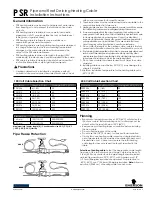
53
11. RA-4/4A High Voltage Circuit Troubleshooting
6
5
4
3
6
1
3
2
1
5
6
7
6
5
7
9
9
A BOARD
D BOARD
R8165
+135V
R8164
R8163
R8161
R8162
FROM
ABL
T8003/11
CN8003
JUMPER
PLUG
C8086
R8160
R8156
R8129
IC8009
R8123
+12V
R8118
D8035
RD5 - 1M
D8048
R8135
R8121
D8032
FROM
T8003/6
C8077
R8140
C8084
R8202
R8194
CN8007
R8193
+12V
Q8028
N
R8171
C8093
R8125
C8073
R8117
+12V
C8083
Q8031
N R8091
C8104
R8191
R8192
D8050
R8175
C8096
D8040
C8075
C8075
R8122
R8110
R8609
IC8006
D8045
MA3041
D8038
RD13M
IC8010
D8026
+12V
R8103
R8094
Q8021
R8092
C8054
N
CN8009
R8058
C5095
CN506
C8111
D8021
+12V
R8097
TO
Q8027/B
HV STOP 1
TO HD
BUFFER
Q8005/B
TO
IC1009
OSD CPU
FROM HV
STOP 1
IC8010/1
& IC8008/1
FIGURE 11-6 - HV STOP 2
11.6TVP14
7/11/02
+12V
Troubleshooting Tips: Since there are two sets of protect circuits, isolating which one is activating is the first step.
This is easily accomplished by monitoring either anode of D8021 in Figure 11-6 to determine which circuit is
sending the high signal. This may only be useful if a problem exists within one of the devices in either protect
circuit. A legitimate high voltage problem may trigger both protect circuits. If high voltage and current levels have
been
absolutely verified to be within specifications
, this is the
only time
when it is safe to defeat these circuits for
troubleshooting purposes in order to locate the component causing the false shutdown.
















































